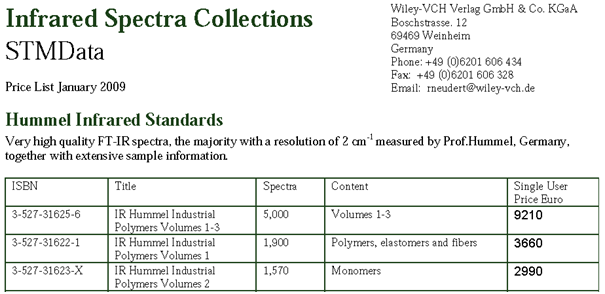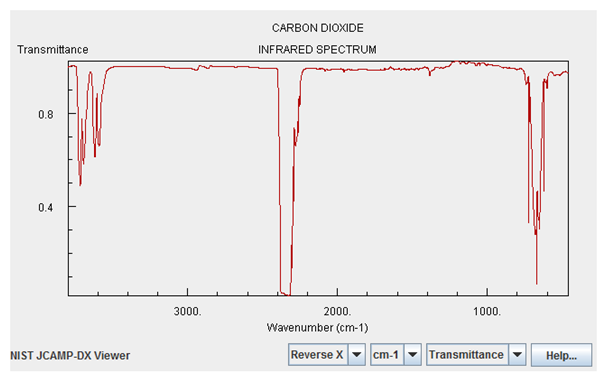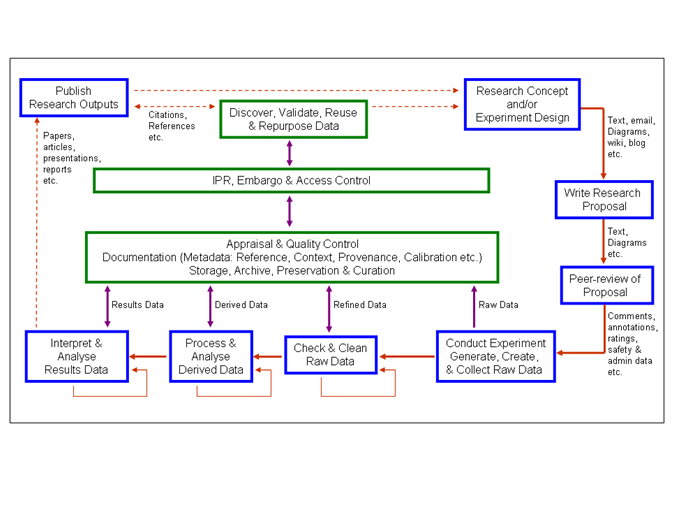Scraped and typed into Arcturus
This is my FOI request to a number of Russell Group Universities about the introduction by the British Library of DRM for InterLibraryLoans . There are about 20 RG universities and I have already sent an FOI to Cambridge. As always I would value comments and possibly extra questions though it must be on DRM and preferably ILL.
NOTE: This series of blog posts will start to simmer down after this one. Until the replies come in….
Dear University of XXX
I am writing under FOI to request documentary evidence relating to the British Library’s introduction of Digital Rights Management (DRM) technology in its delivery of InterLibraryLoans (ILLs) for journals and journal articles in electronic form (e-ILL). The scope of the request is strictly limited to journal articles (“articles”) and not e-Books or other media (e.g. films). In all replies I request specific documentary evidence rather than general principles. Reference material is appended.
DRM raises major issues for libraries as evidenced by the CEO of the British Library, Lynne Brindley (Brindley2006) and the American Library Association [ALA2008]. The ALA state:
providers can prevent the public from use that is non-infringing under copyright law as well as enforce restrictions that extend far beyond those specific rights enumerated in the Copyright Act (or other laws). Thus, DRM changes the fundamental relationship between the creators, publishers, and users, to the detriment of creators, users, and the institutions that serve them.
DRM also appears to break accessibility law and guidelines [RNIB2010].
e-ILLs are generally requested by academics through their University Library and provided by the BL. They are governed by “part 4 of The Copyright (Librarians and Archivists) (Copying of Copyright Material) Regulations 1989 – http://www.opsi.gov.uk/si/si1989/Uksi_19891212_en_1.htm and schedule 2 – http://www.opsi.gov.uk/si/si1989/Uksi_19891212_en_3.htm ” (Copyright1989). The academic has to sign a contract that they will adhere to these conditions. It is my contention that this act, together with the professional standards of academics and the easy identifiability of anyone breaking it, is sufficient to control the unlawful copying of copyright material. It is the introduction of DRM in addition to this process that is the essence of this request (i.e. e-ILL vs e-ILL-DRM).
The introduction of e-ILL- DRM by the BL started about 5 years ago and was specifically introduced by them (i.e. not simply passing through a content provider’s own DRM). The technology was Adobe Digital Editions (ADE). I can find no public record of discussion or governance of this process either in Universities or at the BL. I have sent a FOI request to the BL to ask for their account of any consultation prior to the introduction of DRM, and also any consultation after the event (including problems raised by the Universities and academics). I formally request the following information which should be supported by documents such as minutes of Library Committees or higher governing bodies, internal memos or public pronouncements:
- Did the BL consult your University before introducing e-ILL-DRM?
- Has your University formally considered the negative effects of DRM on e-ILLs as shown by the ALA’s concerns (“first use”, “pay-per-use”, “time limits” and “fair use”). Please document which of these were considered? Does the University share these concerns and has it made its concern public?
- When the BL introduced DRM on ILLs, did your University object or attempt to negotiate less stringent control? Please document such representations?
- Do you consider that the use of ILLs restricted by DRM conforms to your Accessibility policy or to legal requirements on accessibility? Please document.
- BL2009 speaks of “The decision to add FileOpen [another DRM] … was driven by customer demand”. Please indicate whether you believe yourself to be a customer of the BL and whether you have “demanded DRM”.
- Have you at any stage raised concerns about the use of DRM in educational and research material? Has it been discussed at your governing bodies?
I look forward to your reply.
References
[ALA 2008] http://www.ala.org/ala/issuesadvocacy/copyright/digitalrights/index.cfm
DRM: A Brief Introduction
The purpose of DRM technology is to control access to, track and limit uses of digital works. These controls are normally imbedded in the work and accompany it when it is distributed to the consumer. DRM systems are intended to operate after a user has obtained access to the work. It is in this “downstream” control over consumer use of legitimately acquired works that DRM presents serious issues for libraries and users.
DRM technology is new and evolving. Different schemes are being proposed, developed in the laboratory, and experimented with in the marketplace. In general, these technologies are intended to be flexible and to provide a wide range of options to the content provider, but not the user or licensee. Importantly, DRM technology can have profound effects on a wide range of policy issues, including intellectual property, privacy, access to government information, and security. As a consequence, it will be very important for Congress to carefully consider the impacts on many different constituencies, including libraries.

Key concerns for libraries
The principal policy issues for libraries and schools are not derived from DRM technology, itself, but from the business models the content industry chooses to enforce. DRM has uses far beyond simply enforcing traditional and long-standing protections extant in current law. By embedding controls within the product, providers can prevent the public from use that is non-infringing under copyright law as well as enforce restrictions that extend far beyond those specific rights enumerated in the Copyright Act (or other laws). Thus, DRM changes the fundamental relationship between the creators, publishers, and users, to the detriment of creators, users, and the institutions that serve them. DRM, if not carefully balanced, limits the ability of libraries and schools to serve the information needs of their users and their communities in several ways by:
Eliminating the “First sale” doctrine by limiting the secondary transfer of works to others. First sale has been for centuries a bedrock principle governing the balance of rights between consumers and sellers of information products. It is first sale that allows people to share a favorite book or CD with a friend and that creates secondary markets for works. It is first sale that allows libraries to loan lawfully acquired works to the public.
Enforcing a “Pay-per-use” model of information dissemination that, if it becomes the dominant or even sole mode of access, will be contrary to the public purposes of copyright law. It should not be the business of government to favor or enforce any particular business model in the information marketplace, particularly one that raises major issues of equity and potentially severe economic consequences for public institutions.
Enforcing time limits or other limitations of use that prevent preservation and archiving. Many market models of DRM distribution systems envision content that essentially disappears after a specific period of time or number of uses. DRM technologies can also prevent copying content into new formats. Such controls will prevent libraries, historical archives, museums, research institutions, and other cultural institutions from preserving and providing long-term access to the knowledge products of our society. From the days of the Great Library of Alexandria, society has turned to such institutions to preserve its cultural heritage and provide access to it. There is no evidence that alternative organizations currently exist or will form to play that role in the digital pay-per-use
world.
Eliminating “fair use” and other exceptions in Copyright Law that underpin education, criticism, and scholarship. DRM technology can prevent normal uses of works protected by copyright law, such as printing or excising portions for quotation. For libraries and schools to serve their educational, research, and information roles, the public must be able to use works in the full range of ways envisioned by the Copyright Act in its limitations and exceptions.
[Bl2009] http://www.bl.uk/news/2009/pressrelease20091126.html
Responding to customer demand, the British Library, supplying over 1.6m articles every year to researchers all over the world, has added FileOpen to its choice of delivery options via its Document Supply Service. FileOpen’s DRM technology will improve accessibility and extend the reach of the British Library’s vast resources.
The British Library’s Document Supply services have been at the heart of the national and international research community for 50 years, enabling users to exploit a wealth of information for the benefit of research. In the digital age increasing customer demand for electronic delivery, both remotely and immediately, has seen the number of Document Supply users requesting content delivered electronically raise to over 70%.
In an effort to provide customers with greater flexibility when receiving electronic documents, the British Library has teamed up with FileOpen Systems, a leading provider of a Digital Rights Management platform to the information industries. The FileOpen option offers users an alternative to the Library’s existing Adobe Digital Editions platform, enabling them to access copyrighted material in their Adobe PDF Readers without the need to download a new viewing application.
“The decision to add FileOpen to our Document Supply delivery options was driven by customer demand, they wanted a choice of electronic delivery options,” says Barry Smith, Head of Sales and Marketing at the British Library. “Customer feedback from the testing phase was very positive, and we are pleased to announce that we are now recommending FileOpen as our preferred electronic delivery option to all customers.”
“We’re delighted to be working with an organisation with such worldwide prestige as the British Library, and to be providing their customers with a robust, user-friendly solution for secure document access,” said Elizabeth Murphy, Vice President of Sales and Marketing at FileOpen Systems. “FileOpen Systems is the leading provider of DRM for Scientific, Technical, and Medical (STM) information, and continues to innovate to meet the high standards of that market.”
The FileOpen secure delivery option is now available to all Document Supply customers but is currently unavailable via British Library Direct or British Library Direct Plus.
[Brindley2006]
Quoted in http://www.pcpro.co.uk/news/94639/british-library-shouts-out-against-unfair-drm:
“As one of the world’s great research libraries we are equally mindful of the threat that an overly restrictive, or insufficiently clear, IP framework would pose to future creativity and innovation”
And http://www.pcpro.co.uk/news/88316/uks-top-librarian-calls-for-digital-protection
“Lynne Brindley, chief executive of the British Library, warned that DRM is already having an impact on the traditional exceptions to copyright law that have existed for libraries”.
Read more: British Library shouts out against unfair DRM | News | PC Pro
http://www.pcpro.co.uk/news/94639/british-library-shouts-out-against-unfair-drm#ixzz0ok64SAex
[RNIB2010]: http://www.rnib.org.uk/livingwithsightloss/readingwriting/ebooks/Pages/ebook_formats.aspx
“Adobe’s DRM requires you to download your ebook to ebook reading software called Adobe Digital Editions. Adobe Digital Editions (version 1.7.1) currently has no real keyboard access and does not work with access technology. So if you purchase books that are secured with Adobe DRM, you may not be able to read them using Adobe Digital Editions,” [Note: PM-R: Adobe Digital Editions is the DRM employed by the BL from 2005 onwards






